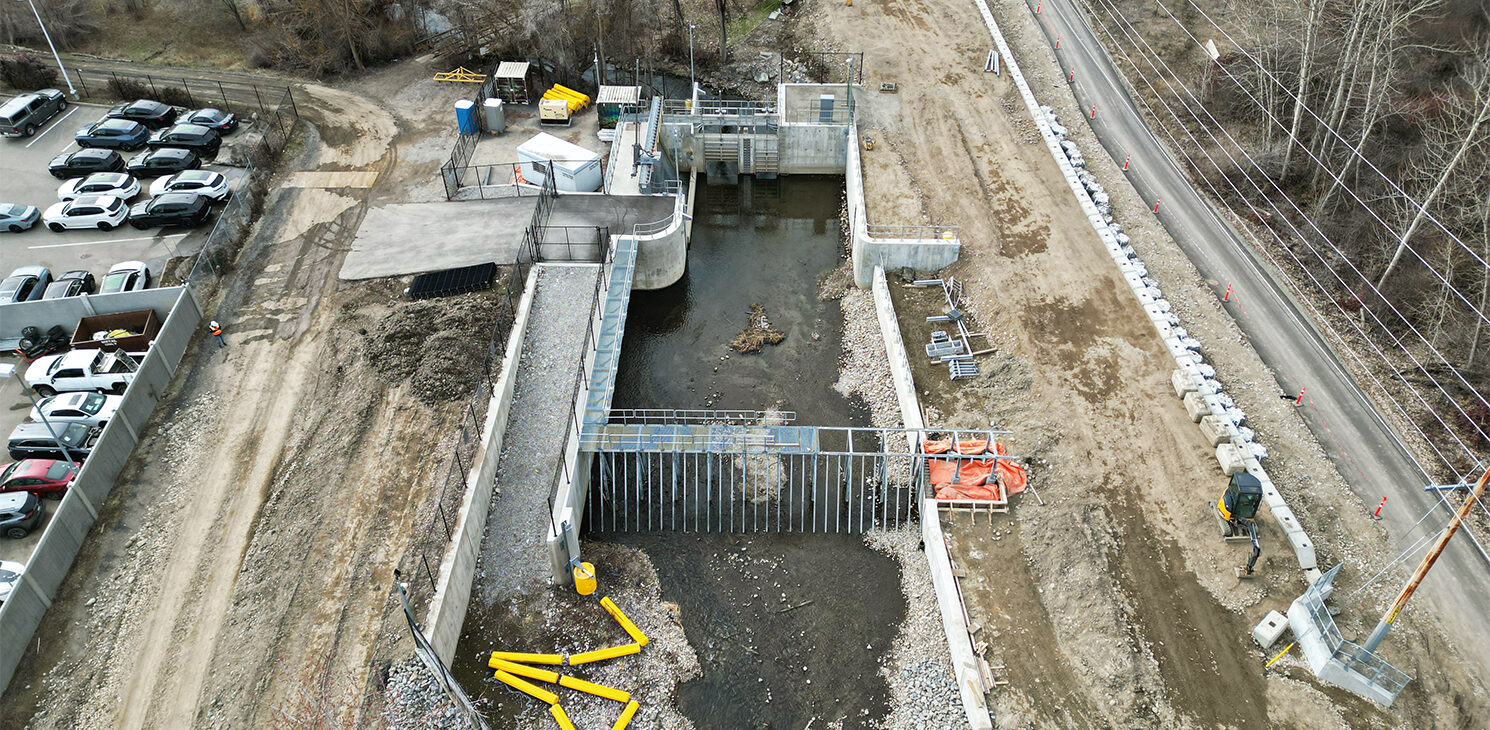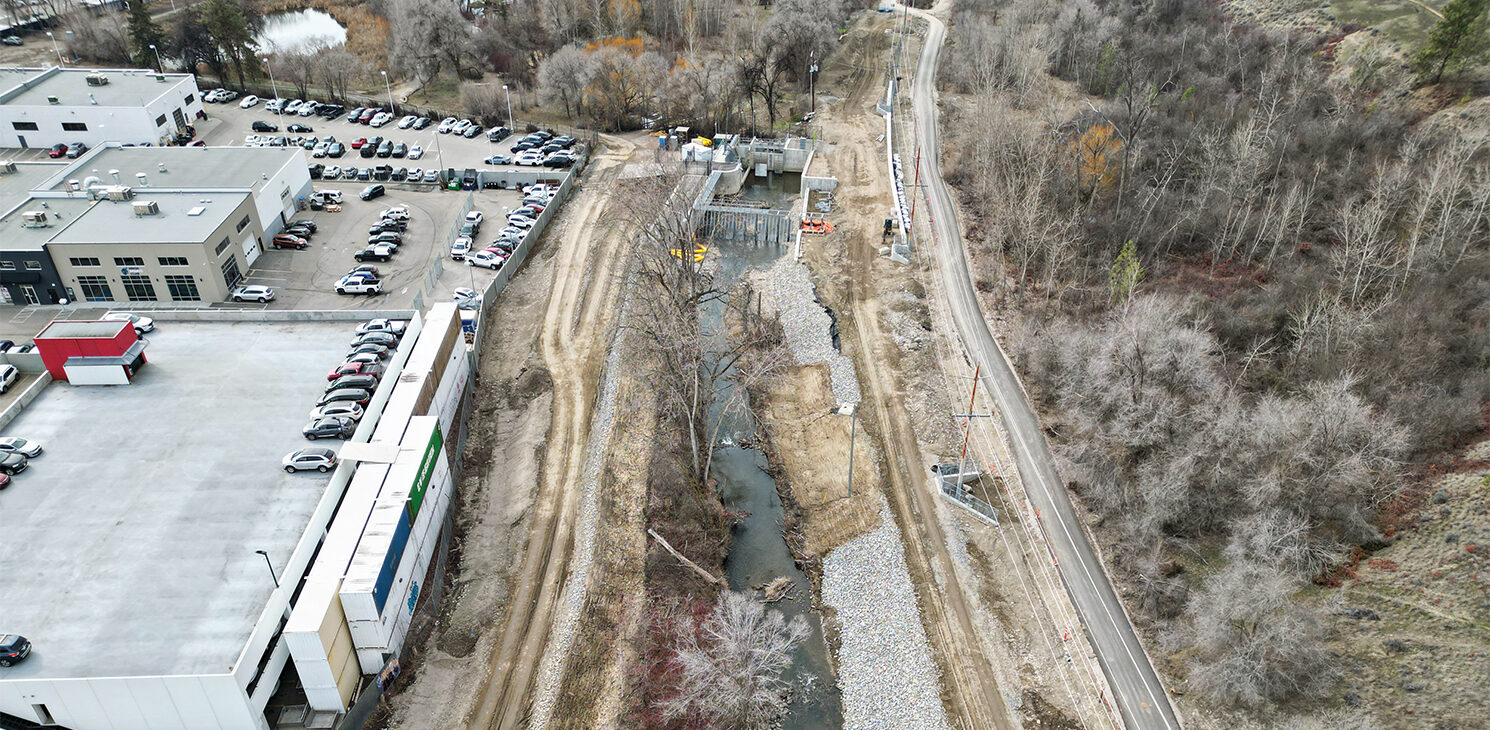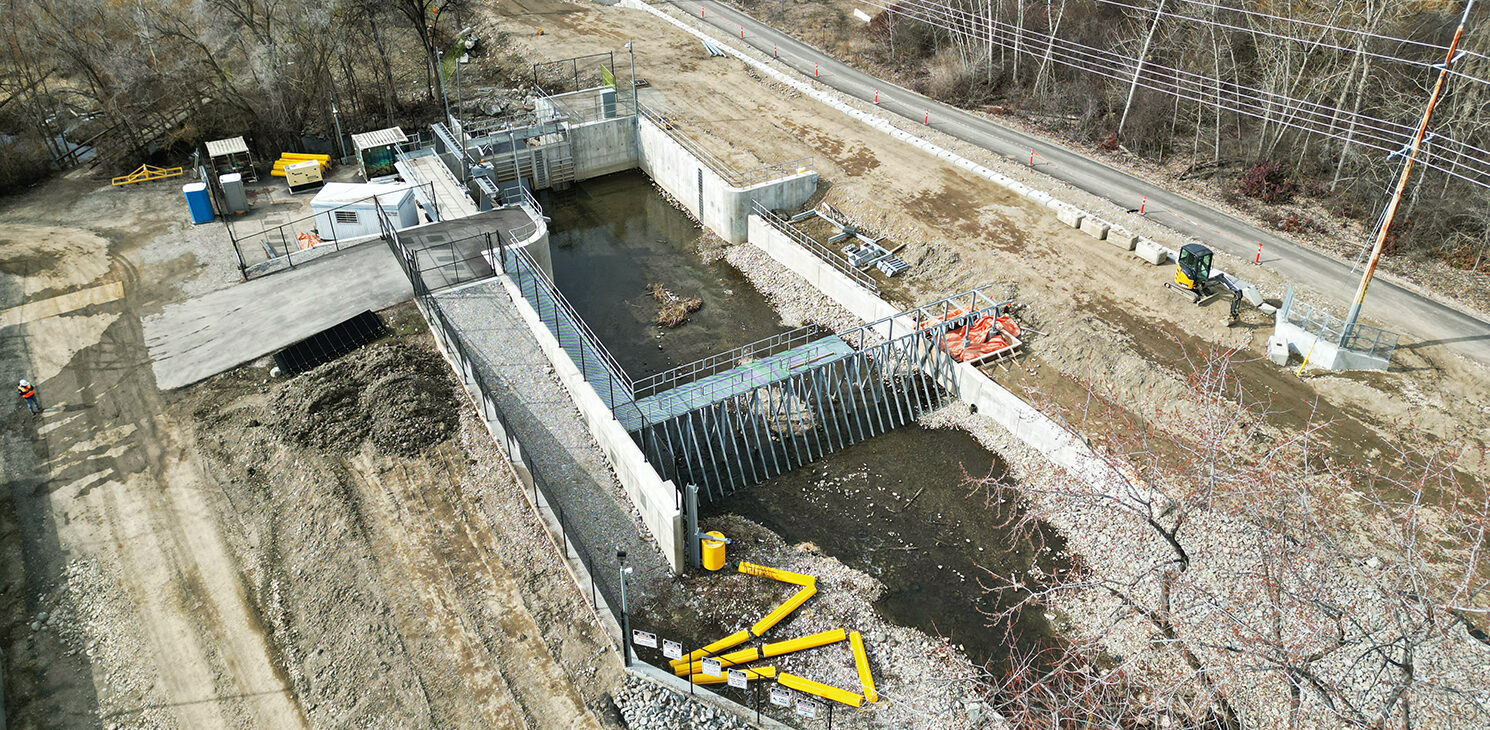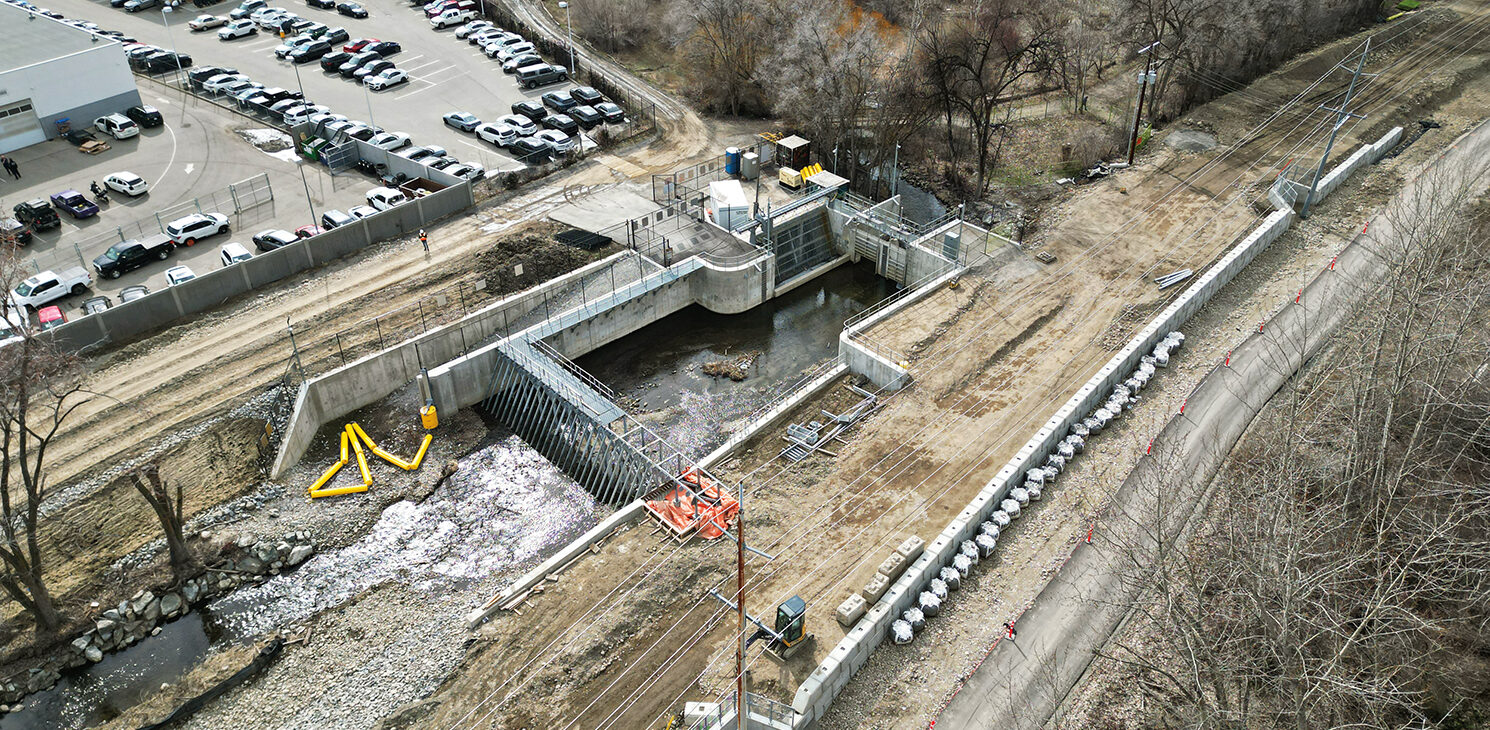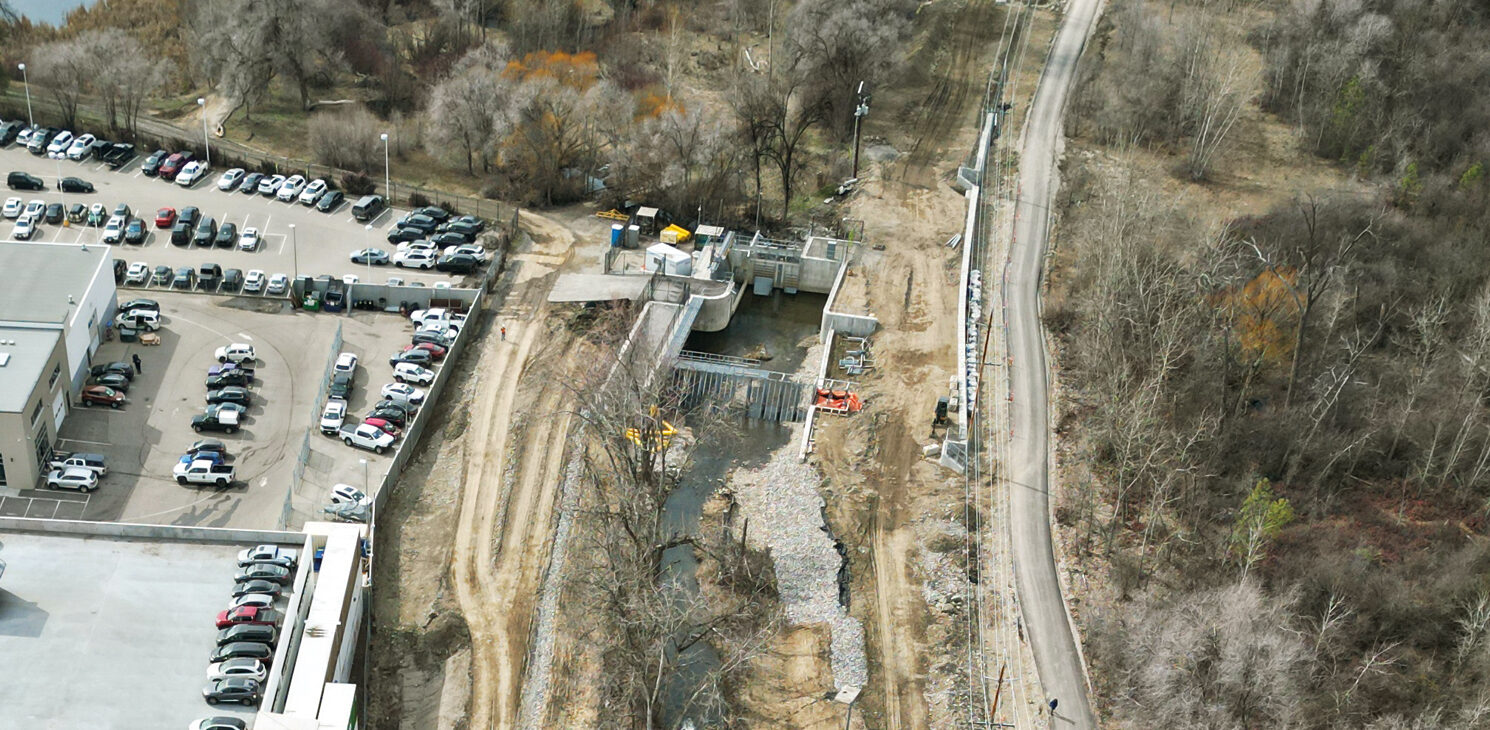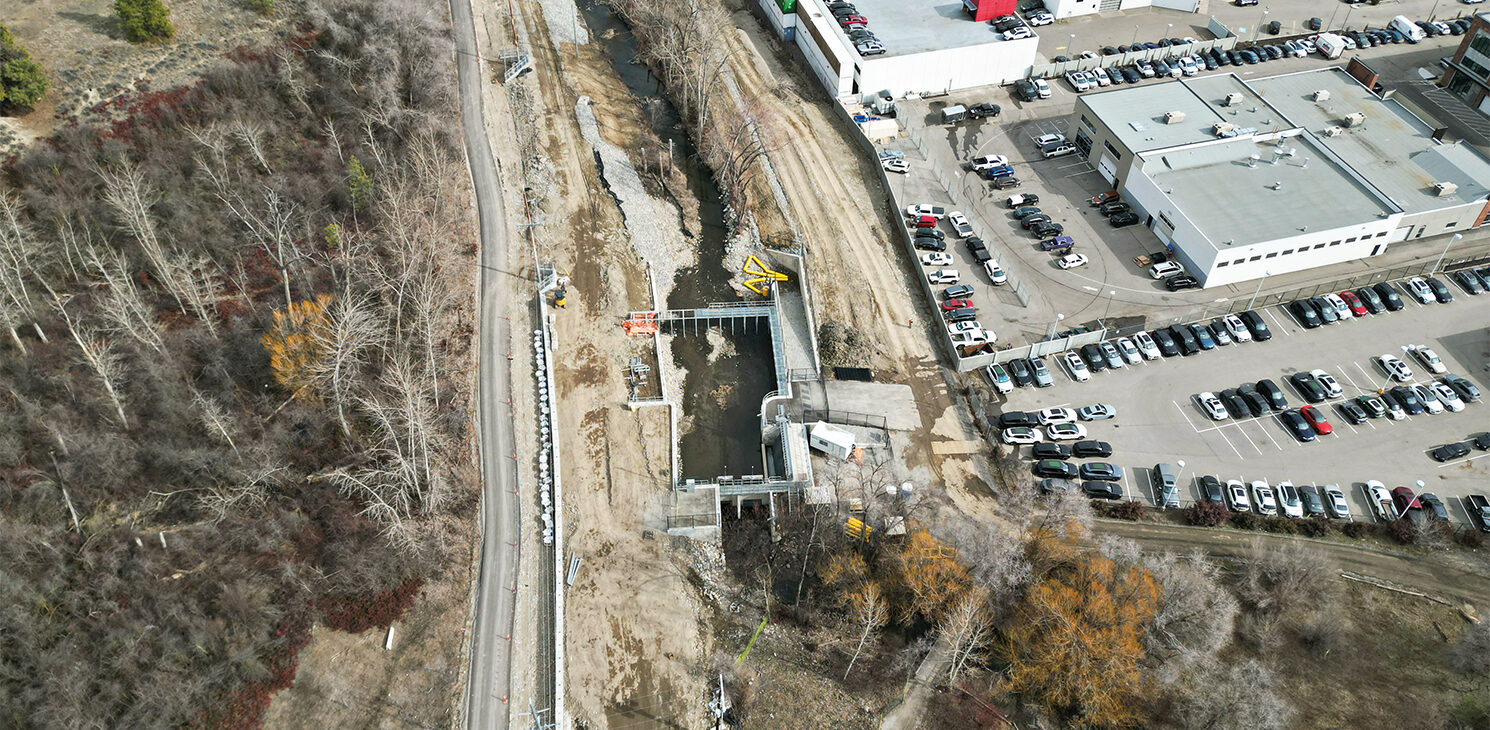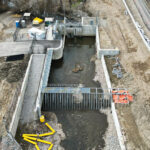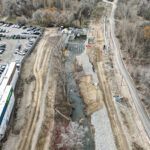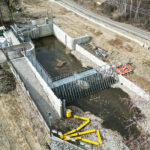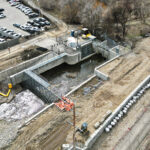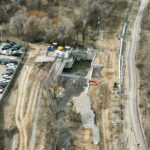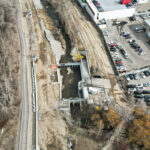However, modelling done in 2020 showed that the 200-year peak flood had increased from 12 m3/s to 24.3 m3/s due to climate change, thus indicating that the structure was no longer suitable. The City of Kelowna entrusted MidSea Engineering (part of CIMA+ since 2023) with upgrading the design of the diversion structure to increase its capacity and reduce the risk of flooding. The project was divided into two construction phases, the first one having been completed in mid-2023, and the second one started shortly after and is slated to be completed in 2024. The improvements are estimated to cost over $15M, and the overall project is a part of the $55M Mill Creek Flood Protection project, which is one of the largest and most complicated capital projects in Kelowna. The objective was to increase public and staff safety, enhance the hydraulics of the diversion structure to divert more water toward Mission Creek, improve debris management, and improve the upstream pass for spawning salmon that was blocked by the original structure. The project required several permits, such as a Water Licence, and authorizations under the Dike Maintenance Act, Dam Safety Regulation, and Fisheries Act, etc.
Major challenges and innovative solutions
The project faced several challenges, including improving the structure’s safety for staff and members of the public, upgrading the design to cope with a 200-year flood event that is more than double the original design value, managing debris, and implementing environmental offsetting and fish passage improvements. To support decision-making, a matrix was created using factors such as construction costs, ease of maintenance, safety measures, capacity improvement, environmental impact, and requirements for debris management. Three lines of defense were designed to manage the debris and trash accumulating during a flood event. Innovative solutions implemented during the design and construction phases included an inclined trash rack, a fully automated trash rake, an access ramp to take the accumulated debris out, and automated gates. Our engineers also designed many environmental and fish habitats such as fish pools, floodplains, creek riffles, engineered log jams, and bird nests. The project was presented at the 2023 and 2024 BCWWA Annual Conferences by Ali Taleb and Ali Malekian from CIMA+, who won the Young Professional Scholarship to attend the 2024 WEF/AWWA YP Summit in Portland, OR, largely because of their work on the project.
Environmental Consultation and Contribution to Sustainable Development
Before this project began, the Okanagan Nation Alliance was consulted and all their requirements for environmental improvements were implemented. To ensure that the project had no negative impact on fish habitats, strict regulations were implemented as per the Water Protection Act and the Water Sustainability Act. The project also underwent a Dam Safety Regulation review application and Dike Maintenance Act approval, which required adherence to various design, maintenance, environmental impact provisions, and regulations. To minimize the environmental impact, the project’s design was revised multiple times, resulting in reducing the number of trees that need to be cut by more than half (only 70 trees instead of 150). Tree compensation was strategically planned as three new trees were planted for each tree felled during construction. The compensation plan was reviewed and approved by Fisheries and Oceans Canada – Pacific Region and the BC Ministry of Forests.
During the project, our team faced the challenge of keeping the Okanagan Rail Trail open to the public. As the trail is one of the most active bike and pedestrian paths in the city, a parallel detour of approximately 500 m long was constructed to divert traffic, ensuring that the trail remained open during construction.
